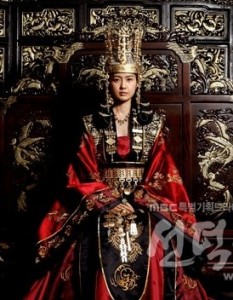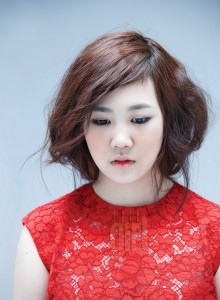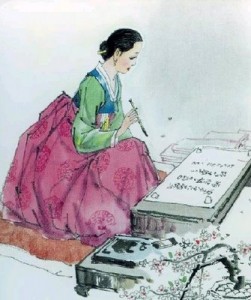 Lately, publications in South Korea have been popcorn-worthy: single women are more vicious, depressed and a constant problem for the population. Them decadent women are supposedly more tolerant about premarital sex. And to top it all, contraceptive pills are no longer distributed over-the-counter. Setting limits for women when talking about control over their reproductive functions goes deeper than that. But I will get back later to this. How should we interpret this? How can we glance at the image of Korean women without our Western-shaped glasses?
Lately, publications in South Korea have been popcorn-worthy: single women are more vicious, depressed and a constant problem for the population. Them decadent women are supposedly more tolerant about premarital sex. And to top it all, contraceptive pills are no longer distributed over-the-counter. Setting limits for women when talking about control over their reproductive functions goes deeper than that. But I will get back later to this. How should we interpret this? How can we glance at the image of Korean women without our Western-shaped glasses?
Deep-rooted in every country’s civilization, misogyny has played its toll on women’s social status. The female populace all over the world confronts the same problem, to different extents and forms: there are predominant prejudices and ways to discriminate depending on the country and region. This implies that besides what is specific to the world’s evolution, regional characteristics will give a hand to the instituted sexism.
Women’s discrimination is particularly hard to discuss. Racism’s causes are traceable within the first encounters of two civilizations (or parts of it). Religions’ clash is the fuel for later debates. But women existed into every possible corner of the world; people didn’t have to get accustomed. So when did it all begin?
Engels spots the essential point that made the women’ condition falter as the expansion of private property and implicitly the class division. The hierarchy developed with time or, according to socialists, with the evolution of subsistence methods. When a hand-to-mouth living was the norm, both genders were productive. Women’s attributions were mainly in-doors (food, childcare), but there was no ethical differentiation. Up until this stage, there is little to object to women’s productivity.
But the improvement of tools, the domestication of animals and the opportunities they opened favored the male supremacy. It wasn’t men’s biological structure by itself that offered them the superiority, but the will to exploit his surroundings. Valorizing the land at its best, the extension of the household — the intrusion of private property at its best — made the role of men the most important one. Furthermore, the accessibility of wealth awakened a possession instinct which manifested over women too. In these conditions, it’s not the females’ physical attributes that started the oppression; it didn’t stop them until this very moment to bring their own input. Their unwillingness to participate to the full exploration of the environment in their own way is what made it easier for the men to regard them as objects they could own.

While Engels’ research (based on Lewis Morgan’s anthropological study) was based on a large number of prehistoric evidence, geographically and culturally diverse, a personalized analysis would come in hand. How did this social class evolve with time? What exactly scarred the image of women from Korea’s tumultuous history?
The Korean society didn’t dismiss women as violently during those times. Until the end of the Silla dynasty (approx. 57 BCE – 935 ACE), there are still accounts of women who held higher rankings in the imperial administration and the coexistence of patrilineal and matrilineal inheritance systems. In the case of marriage in Koguryeo, the bride’s family would provide a new home for the newly wed couple.
The unification of the Three Kingdoms marks the intrusion of Buddhism. Its dogma appeared earlier in each kingdom and could be called sexist at some point, but it is not aggressive towards females. Moreover, there isn’t any emphasis placed on family. The lack of contradictions with Shamanism made it easier for Koreans to adopt it. This period is marked by uncertainty and attempts to define state institutions, which reflected on an ideological plan: besides Buddhism, which will take over the Goryeo dynasty, Shamanism, Taoism and Confucianism lived side-by-side.
Women and men wore the same type of hanbok. Korean civilization and arts were flourishing and some call Goryeo a golden age for Korean women. They had the right to inherit, to take custody of their children, to separate and remarry. In the poor families, in times of peace, women and men worked together. One third of the Goryeo population was working (in a surrogate  of slavery), women included. But the power in society for the female upper class is obtained through the men they frequent, as proven by dowager queens. Discrimination happened also on military grounds. Having the boy selected for the army was an honor, thus a general preference for a male offspring.
of slavery), women included. But the power in society for the female upper class is obtained through the men they frequent, as proven by dowager queens. Discrimination happened also on military grounds. Having the boy selected for the army was an honor, thus a general preference for a male offspring.
Is then the Goryeo period the most profitable for women? Completely the opposite. Middle to late Goryeo harshly reinforced the feudal system. Until this age, the land was given based on merits. Private property in its true meaning was a luxury or an honor. When the authority granted the right to commoners, they met the opportunity to become small landholders. And we’re back to the instinct of possession. Men were the only ones eligible; only a male heir could inherit the received property. Late Goryeo is even more trenchant. If we were to point at just one period, this is the time where women lost the fight.
Misogyny and Confucianism always go in the same sentence; it is the scapegoat of Korean sexism. Its beliefs though failed to achieve popularity in Korea, which was exposed to it since 4th century. Its morals remained foreign to them. Adopting the lifestyle it will impose during the Joseon dynasty would have been difficult had it contrasted with their values. To adopt a religion, the masses have to prepare. If Korea had supported and respected women, Confucianism wouldn’t have oppressed them; for ten centuries, it failed to make them succumb.
The feudal system prepared the Korean woman’s downfall. The ideological mutation needs an economical gap before imposing itself. The changing image needed a shape to fill which Confucianism will provide. Its principles finally fit the Korean society. The woman now gained her identity inside the family. The bride was forced to move in her in-laws’ house and to obey, in this order, her father, her husband, and her son. Becoming a mother earns her the highest respect she can get. A man who had daughters was listed as if he didn’t have any children, which will lead later to infanticide. Boys were listed first in genealogical or inheritance documents, replacing the old habit of a chronological order. Some parents wouldn’t even name their daughters.

Besides the position that it gives to women, Confucianism brings another addition. While the Western misogynistic prejudices treat women as intrinsically worthless and weak, some nuances emerge when talking about their image in South Korea. For themselves, women are less spiritual, according to both Buddhism and Confucianism. But this isn’t enough. The ideology advances the theory of a relational self (probably an influence on South Korea’s later collectivism). Take this as a farther clarification:
It is commonly accepted now that a Confucian self cannot be understood as an isolated, atomic being. That kind of self as person is often described as a free, abstract and disinterested individual agent. That means a self, in a Confucian view, cannot be cut off, in one or another way, from its surrounding others, i.e., from its historical, social and cultural contextual environment.
Filtered through the gender binary, it linked females to males, as the principle that governed their life was the triple submission. The theory — an interesting one and a valid counterpoint to individualism — coupled with the ideal of servility and resulted in the image that perpetuated in modern Korea. Traces can be found in today’s society: the importance of marriage as spotted in the articles I initially talked about, the habit of women to look from their early stages for a husband, rather than a date or a partner, lookism (crafts from the Joseon dynasty indicate the use of perfume or improvised cosmetics; women had to look good when receiving guests), aegyo and naesung.
[youtube http://www.youtube.com/watch?v=Zdd_cIiqdiA&w=420&h=315]Various documents regulate women’s lives and impose a code of chastity. The Japanese and Chinese invasions (late 16th century-early 17th century) determines an inhuman reinforcement of those codes. Kidnapped and raped women were dishonored, easily divorced and renegaded. Later on, the Korean court will prohibit divorce on these grounds due to its alarming number. The women that preserved their purity during the invasions at the price of their lives were examples for the living population (although they were far from the norm). The aggravation of the moral code is a result to a period of instability when Confucian principles were failing.
The ideology’s rough time demanded better measures. Still encouraging the “virtuous” woman, many pointed out that education could make them understand better what women should be. Didactic texts appeared and evolved into approaching a wider range of moral values and explanations of their behavior. As the primary Confucian teachings lose effectiveness, Neo-Confucianism becomes a natural direction. The new current advocates for the possibility of all individuals to reach in, women included — a weak start, but a start nonetheless.

Another movement arises: Silhak, which began in 17th century and gained popularity during the 18th one, opposes Neo-Confucianism and favors a more practical system of beliefs. Discussions about rights’ equality emerge: in public service, women and men should be treated equally. On par with Silhak, Seohak is western-influenced and kicks in by the same time. In the quest for a more practical learning, Seohak is open to new technologies, reforms and reevaluations; both are associated with Christianity.
But they don’t go without detractors: the next century, the Donghak, an oriental supporting paradigm with an obvious anti-foreign tendency will contradict them. King Yeongjo will bring social stability for a while, insisting at the same time in maintaining Confucianism. Fluctuations like this in the overall mentality will be frequent for the next centuries, causing oscillations between images of women too.
Meanwhile, women get involved in more diverse activities, such as arts or textiles for commercial purposes; the provided education is no longer rudimentary and 18th century assists to a decent number of female writers. Ironically enough, in agriculture and not amid the Yangban the women are better regarded: the farmers’ wives equally contribute for the well-being (or lack thereof) of the family. And throughout history, many women defied their norms or found ways to make their oppression less harmful. It would be naive to imagine that women thoughtlessly assumed their position and accepted the norms.
The political isolation late Joseon dynasty will bring blocked outside influences and let women confined in their assigned behavior. The tumultuous 20th century couldn’t have brought in its early stage much improvement. Political insecurity is synonymous for strong conservative tendencies, resulting in protecting the traditional norms. The economic development brought changes, but in a different way.
So why no revolution? Simply because gender isn’t the only social group women can adhere to. Unless you’re on dope and listening to Lennon‘s “Imagine,” it is impossible for half of the population to agree on the same vision. Gender, family, classes, religions, finances – they all combine to create one person’s status. The Yangban women would have been more empathetic with the Yangban men than with female commoners. The social differences between classes are too profound to be ignored.

Back to 21st century, considering their history, it is still good that many women start working. Sure, the housewife position is respectable, but it advances also an important issue: money. The encouragement of the housewife is good at some point; in comparison with Western countries, where they are looked down upon so easily, a wife and a mother holds a better position. But South Korea’s welfare system is next-to-last among the OECD countries. It means that these women’s finances are regulated through another party, which cuts off their aspiration of independence. Moreover, if we talk about freedom of choice, opting for anything due to heavy outside influence (such as traditional norms) indicates that social pressure does a little more than the necessary. A few years ago, an article was published suggesting that the “alpha women” a.k.a. the working women with a degree have a hard time finding a partner and are a burden for their families.
The population is aging, so the state and the media have a vested interest into stimulating people to get married and have kids. But with a density of nearly 500/square meter, you might want to reconsider your genie wishes. The policies regarding women at work are all over the place and ineffective. Using the whole active population to counterbalance the needs of an aging population is better than increasing its number; quality over quantity.
And the last glitch in the system: making the non-emergency contraceptive pill available only on prescription.
Long-term exposure to oral contraceptives is much more harmful. Think of it, your hormone secretion is being manipulated regularly for years. But many of them are sold without doctors’ prescription.
I doubt doctors discovered now that contraceptive pills have side-effects. It would be understandable if women were asked for a doctor’s recommendation before starting to take the pill (to see what would be right for their bodies), but not forcefully. Women were deemed as reproducers and not as a labor force; they could get pregnant anytime and it was their only function in the eyes of the others. The view of women as child-bearers persists and constitutes a reason for the hiring staff to discriminate women. In 2010, a survey on 1623 Korean women showed that 55% of them felt discouraged from asking a maternity leave, 15% felt pressured to give up on their job after giving birth and 9% were familiar with cases of women forced to quit their working place after childbirth.
Women all over the world are struggling to make their way. Understanding what is general and what is particular in every culture is a legitimate step to take in order to address these issues. As a disclaimer, I’m not trying to point fingers. Yes, the USA is sexist too. Yes, other countries are indeed just as sexist. But heck, I was interested in South Korea. I wanted to see where the prejudices come from and understand them as I often detected them. So what do you think? What causes did I leave out? What are your opinions on the topic?
(Kong, Mee-Hae – “Rethinking Women’s Status and Liberation in Korea“, Crisler, Lance – “The Rice Papers“, GSSGP, TheGrandNarrative, TheUnlikelyExpat, AskAKorean, The Marxist,KHistory, MacroHistory, TooPoorForGradSchool, Ethanet, JejuWeekly, KoreanHistory, SungJinYang, Tasramar, ConfuChina, MongaBay, ICFEC, ScottValentine, MyGoguryeo, AsianInfo, LifeSiteNews, The Chosun Ilbo [1],[2],[3], Korea Times, Mingeikan, SingaporeBrides, 1stLook, MBC, YeInJee, ElleGirl, InStyle, Interscope, Heineken, TheIslandDefJamMusicGroup, ChallengingMedia)



